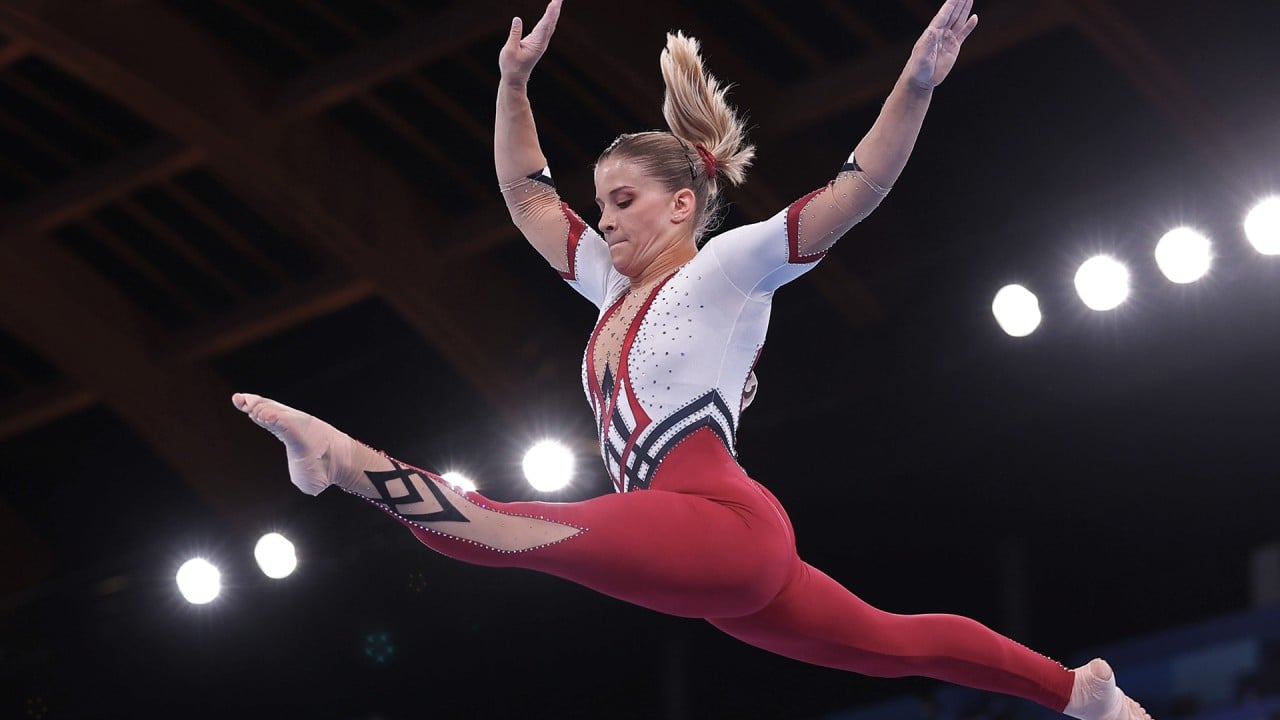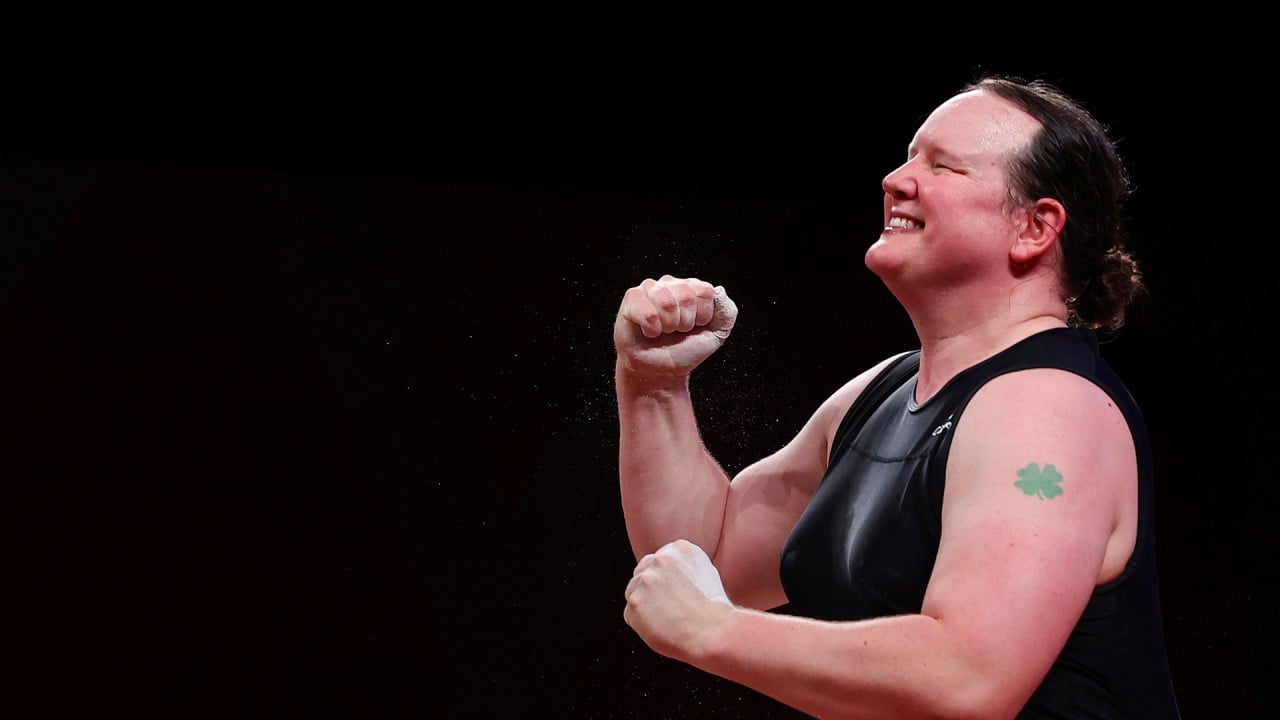
Bikini bottoms vs shorts? Time to stop sexualising women athletes and their kit
- From gymnastics and beach handball to grand slam tennis, there is excessive attention on what women wear. Instead, sportswear should be inclusive of different bodies, religions and health issues
One would think that for an athlete’s outfit, the sole consideration should be comfort. This is the case – except when the athlete happens to be a woman.
These double standards came under the spotlight in mid-July when the Norwegian women’s beach handball team wore shorts instead of bikini bottoms during a competition. For the athletes, it was a practical choice: the traditional bikini makes them feel unnecessarily sexualised, “naked”, “watched” and uncomfortable, especially during their periods.
But these concerns didn’t matter to the European Handball Federation, which fined them €1,500 (US$1,780) for “improper clothing”.
On the same day, Paralympic world champion Olivia Breen was told that her sprint briefs were “too short and inappropriate” by an official while she was competing in the English Championships.
Too short, too long: comments on women’s dress code in sports never cease, to the point where it risks overshadowing their athletic skills. Reconciling their femininity and their athleticism appears to have been more important to sports federations than trying to enhance performances with more comfortable outfits.
The objectification of women athletes is prevalent in many ways.
Some behaviours are very obvious. Vice News recently infiltrated a subreddit that sexualises photos of women Olympic athletes. About 215,000 people subscribed to “Oh-lympics”, where users share photos of athletes’ body parts inadvertently exposed during competition.
The systemic misogyny that affects women is sometimes less overt but no less problematic. Simone Biles, the most decorated gymnast in Olympic history, was a victim of this in May 2017 during an episode of Dancing with the Stars, where the judges disregarded her performance to focus on her smile. But the champion dismissed the comments, which were all too familiar for most women. “Smiling doesn’t win you gold medals,” she answered simply.

As many as 100,000 people die of blood clots each year in the United States, and it remains the leading cause of death for women post-partum.
Instead of acknowledging the athlete’s needs, the French Tennis Federation quickly banned the functional attire from the competition. Its president, Bernard Giudicelli, implied that the outfit of the US champion – who has won more grand slam titles than any player in the Open era – disrespected tennis. “One must respect the game and the place,” he said.
Her outfit was banned in the name of tradition, and in the name of the federation’s vision of femininity in tennis. The message sent is clear: it would welcome women’s bodies according to their established rules, not according to nature’s rules.

Women’s comfort in sport doesn’t appear to matter as much as their appearance. Valérie Nicolas, the manager of the French women’s beach handball team, backed up their Norwegian counterparts after they got fined: “We have lost players due to the suits,” she said. “It is a sport with a lot of movement and you are hindered by the bikini.
The International Handball Federation’s rules are extremely clear: women’s bikinis’ width “must be of a maximum of 10 centimetres”, “with a close fit and cut on an upwards angle toward the top of the leg”. Meanwhile, men can wear shorts that are “not too baggy” as long as they “remain 10 centimetres above the kneecap”.
The description for men’s outfits remains broad, giving them some freedom to pick a design comfortable for them. Women’s ones, on the other hand, leaves very little room for imagination, literally and figuratively.
“Can we focus back on sports?” is something we hear a lot when women athletes’ physiques dominate the conversation. Even if this sentiment is well-intentioned, it is not the solution. The goal isn’t to completely dismiss one’s physical appearance to solely focus on performance.
We should focus on normalising the diversity of bodies, needs and competence in sports. As every athlete has a different story and morphology, sports attire should be adaptable.
This includes adapting it for religious reasons, as many women have been forced to choose between their faith and their passion. It includes adapting it for the LGBT community, members of which have been forced to compete in outfits that make them feel uncomfortable or too sexualised. It includes adapting it for health issues, as highlighted by Williams’ catsuit.
More recently, the black community bore the brunt of our lack of commitment to diversity. Swimming caps for “volume-blessed hair”, from the brand Soul Caps, were barred from the Olympics, after Fina, the federation for international competitions in water sports, said that no athletes needed “caps of such size”. Alice Dearing, who had qualified to become the first black female swimmer to compete on Team Great Britain, was the brand’s ambassador.
Danielle Obe, the founding member of the Black Swimming Association, told The Guardian: “It confirms a lack of diversity in (the sport)”. According to her, official bodies don’t try to address what’s preventing certain communities from engaging in sports.
As awareness of the sexualisation of athletes grows, some women are taking to the Olympics as a platform. Germany’s women gymnasts wore full-body suits instead of the standard leotard during the qualifying round in a stance “against sexualisation” in the sport.
As three-time German Olympian Elisabeth Seitz, who took part in the initiative, put it: “We wanted to show that every woman, everybody, should decide what to wear.”
Salomé Grouard is a digital production executive with the Post



